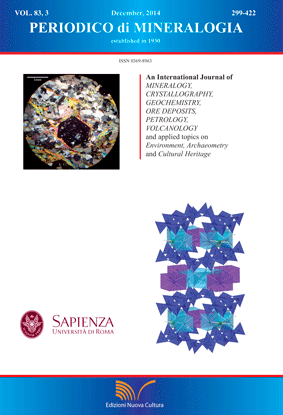Petrography, mineralogy, chemical and technical properties of the building stone of Ostuni Cathedral (Italy): inferences on diagnostics and conservation
DOI:
https://doi.org/10.2451/2014PM0021Keywords:
Calcarenite, weathering, Optical microscopy, XRPD, SEM-EDS, Structural diagnosticsAbstract
Ostuni Cathedral represents an outstanding example of the monumental sacred architecture spread in Apulia (southern Italy) during the Middle Ages. The church dates back to the 15th century and combines the local Romanesque tradition with Gothic stylistic features and elements of Dalmatian, Venetian and Arabic architecture. Between 2006 and 2007, a conservative restoration was carried out on the Cathedral. The operations mainly concerned the masonry, which is built of a local stone material known as “Pietra gentile”, a soft and porous calcarenite with an excellent workability and carvability. This research aims at characterizing the stone used in the monument and its state of conservation. For this goal, on-site macroscopic observations were integrated with sample analyses by means of optical microscopy, X-ray powder diffraction and scanning electron microscopy equipped with microanalysis. In this way, the petrographic classification of the used lithotype and the chemico-mineralogical characterization of its alteration products were carried out. Finally, structural diagnostics of the masonry was performed, through on-site non-destructive ultrasonic and sclerometric tests. The results presented allow evaluating, only few years after the latest restorations, the weathering kinetics and durability of the monumental stone, with a particular highlight on its short-term modifications. The main alterations detected, i.e. black crusts, salt crusts, oxalate patinas and discolorations, are produced by cyclic weathering or previous conservative treatments; moreover, several patterns of physical decay are observable, alveolization and differential erosion principally, which highly affect the technical performance of the stone. These data supply further information about a material that has been studied only recently in archaeometry, although very significant in Apulia from a cultural point of view.


